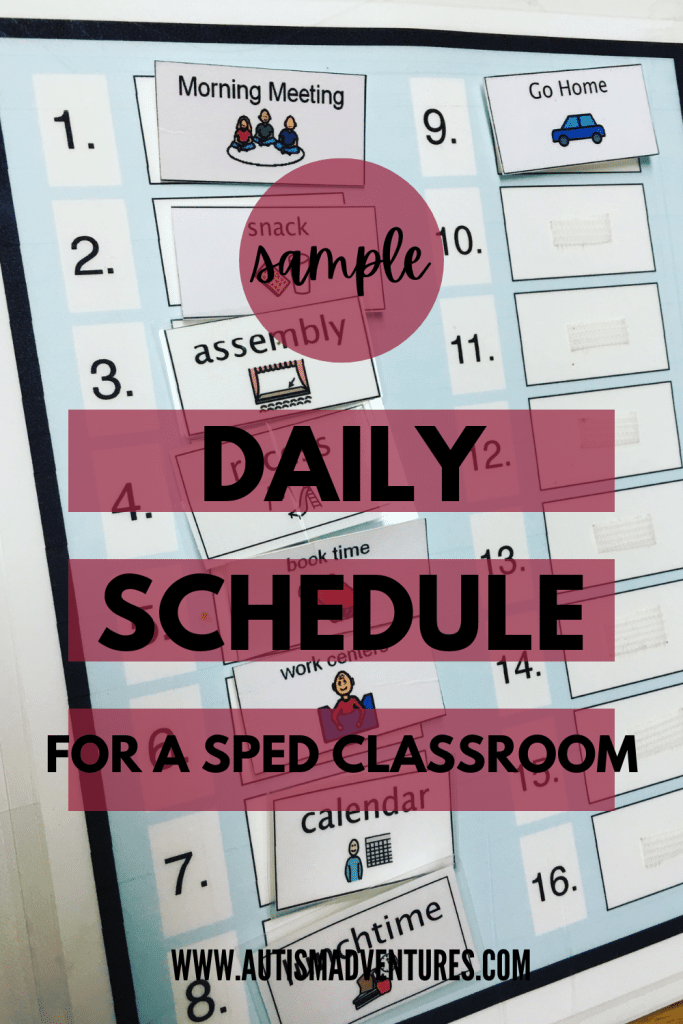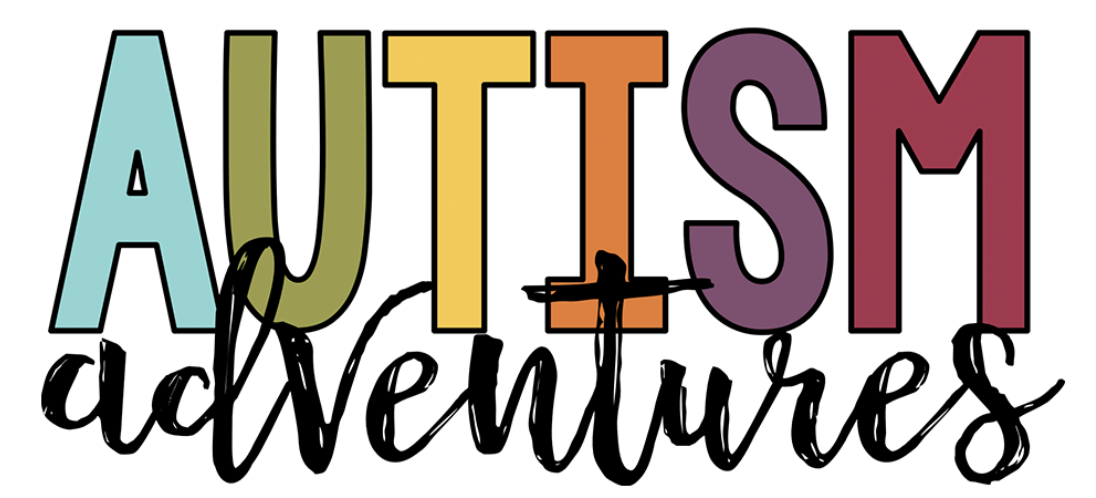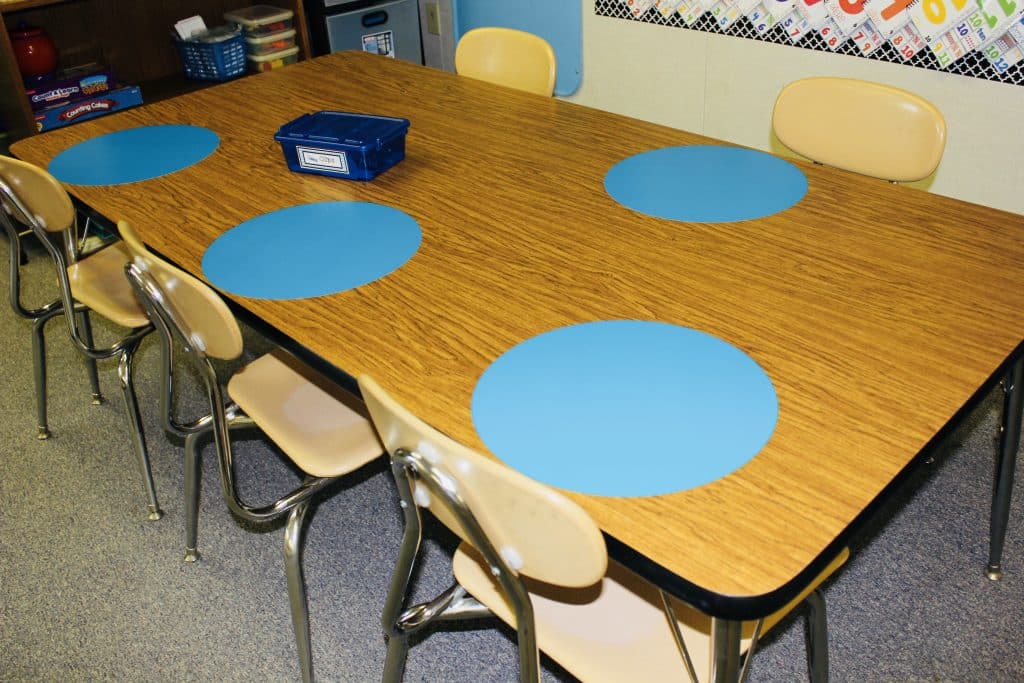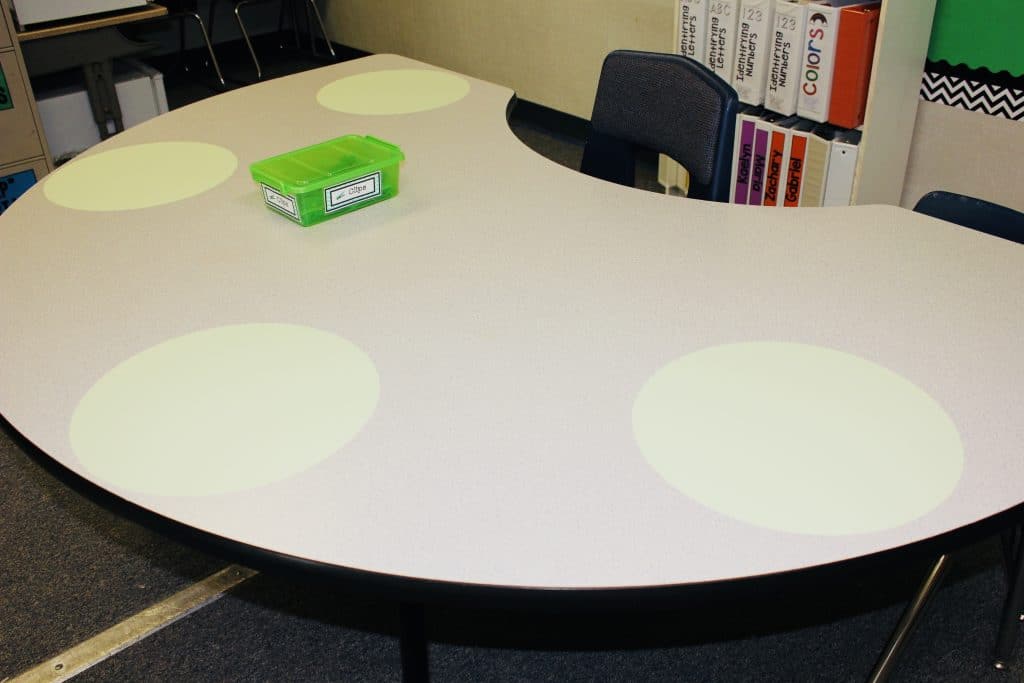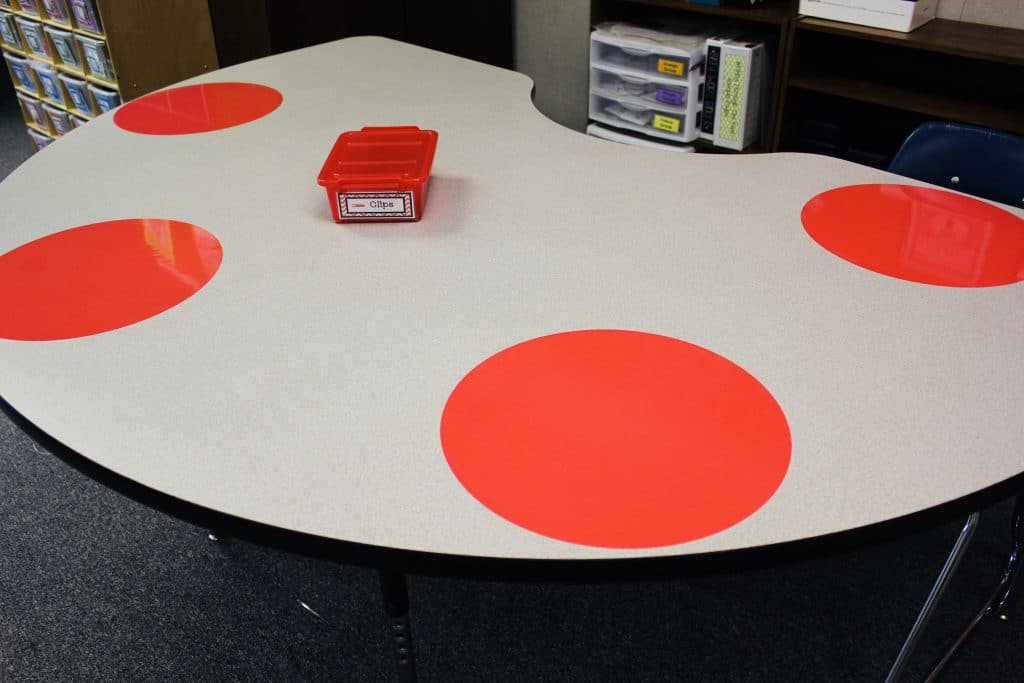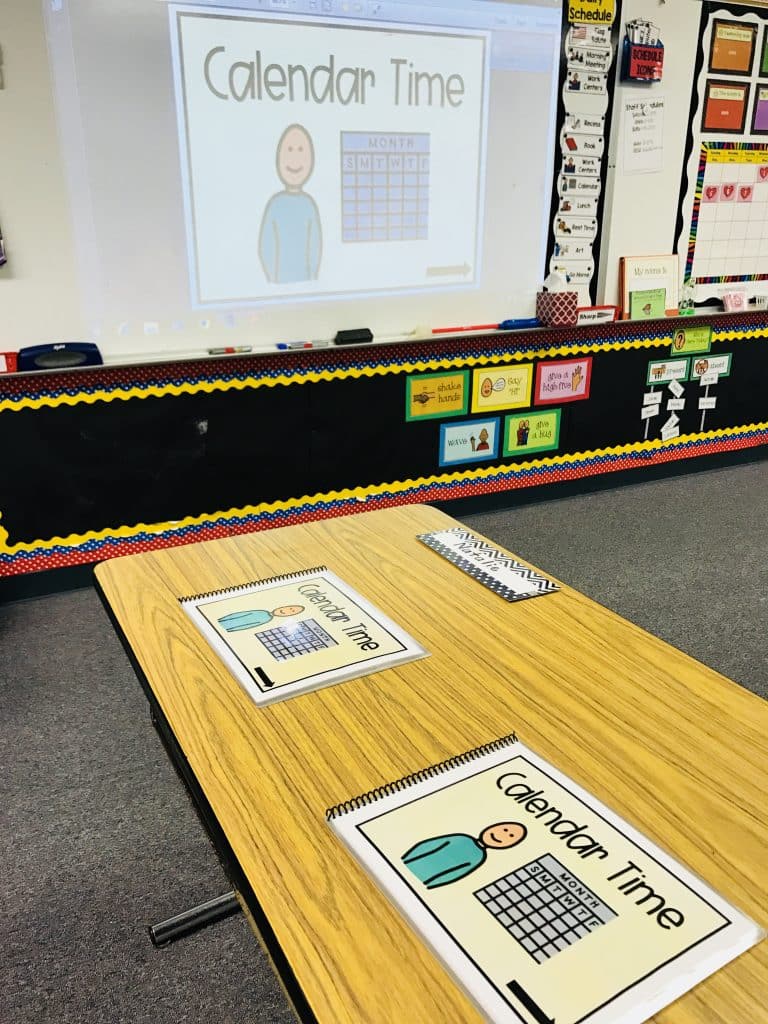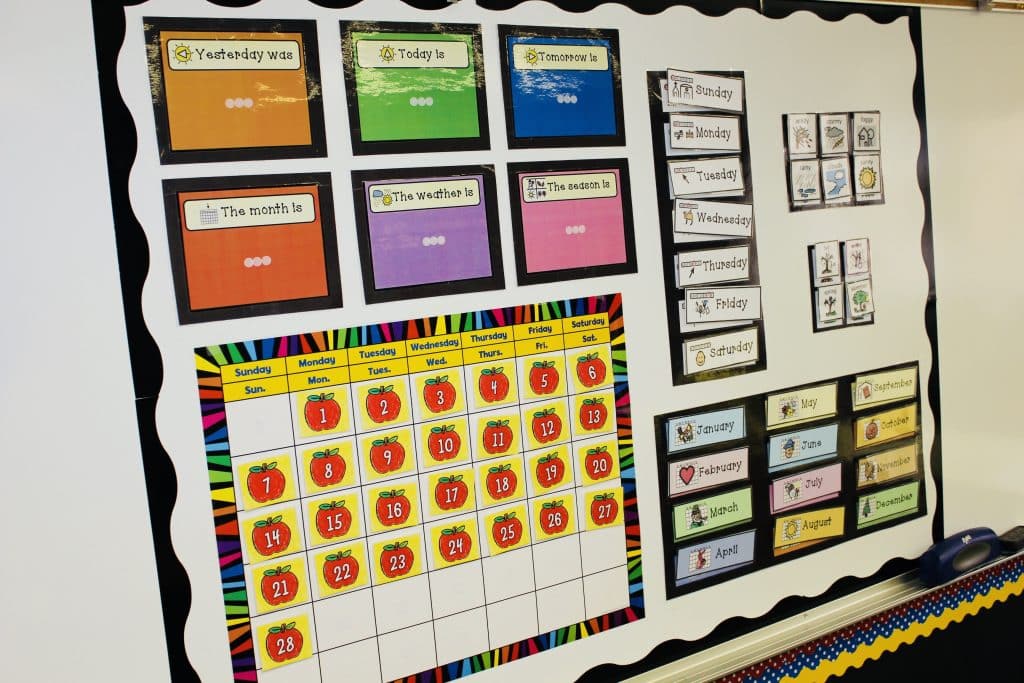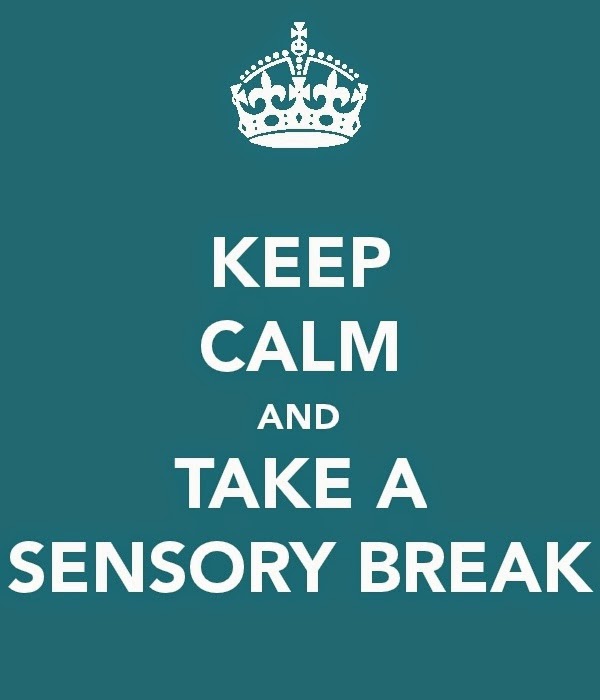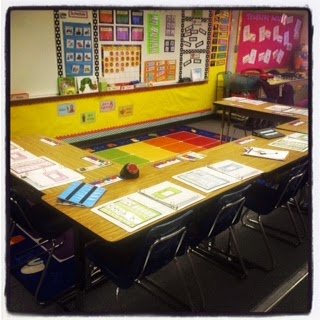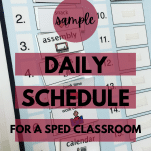Sample Daily Schedule in a Special Education Classroom
Today’s blog post is all about a daily schedule in a special education classroom. Now that you have developed your physical space and bulletin board layouts, It’s time to get into the nitty gritty of schedules. You can read more about my actual visual schedules for students HERE. Today’s post will focus only on the actual schedule within my classroom.
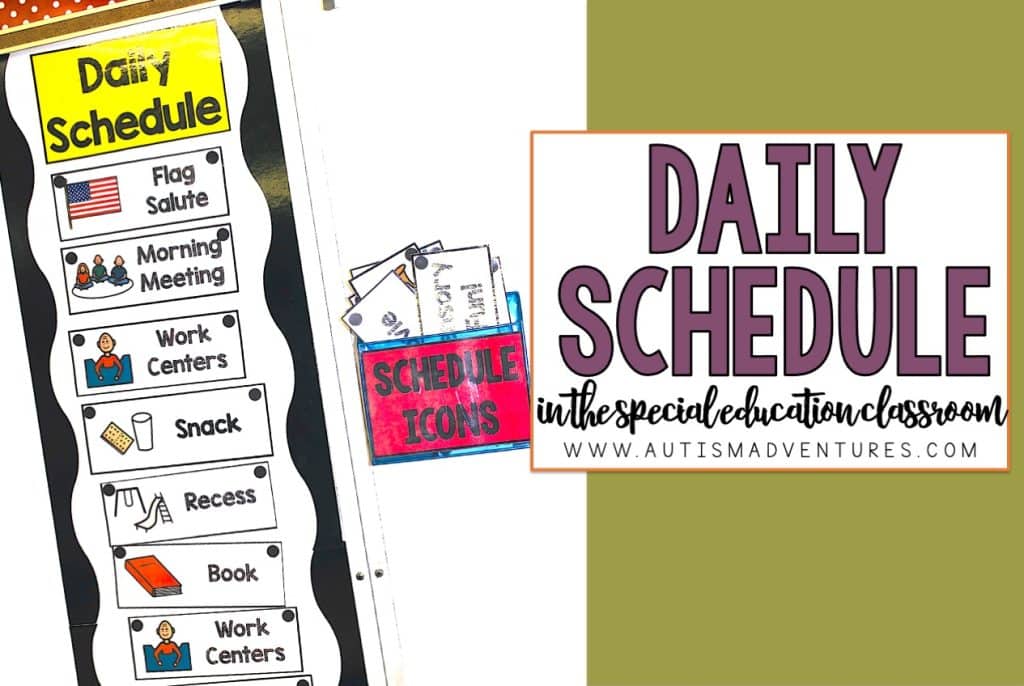
Where to Start With Your Schedule
Setting up a classroom schedule is no easy task for any special education teacher. Start with your non-negotiables such as school specials such as PE, computer lab, library and music. For me, at my old school, these are assigned and could not be changed. Same goes for recess and lunch times. After this, start working on your master schedule to build your daily routines.
From here, you are going to block your day into chunks of open time. Find your big chunks of time where you will be able to incorporate core instruction for your students in work centers. This is also where you will need to review student IEP’s and make a master list of all student services. Set this aside and keep in mind when mastering your schedule. Will your students have whole group services such as speech or adapted physical education? If so, consult with the service providers as soon as you can to get a time slot that works for your students. Individual services will be sprinkled in at times that works for both you and the service providers.
Setting up your schedule is like a big puzzle, one thing affects the other. Starting with non-negotiables is the simplest way to complete your master schedule.
My Daily Schedule
Over the years I often got asked about my daily schedule in the classroom. My Daily schedule is organized down to the minute. My daily schedule always started in the beginning of the year on the first day of school. It truly believe consistency is important in a special education classroom. Creating a predictable schedule can be an important part of your behavior management system. When using visual schedules and creating routines you can create a predictable and safe environment for students. Students can thrive when they know what is expected of them.
I run my day different than most teachers, so I wanted to go into detail about each part of the day to help you understand the flow of our day! Our school day started at 8:30 and started with a school wide flag salute/announcements. From there, my daily class schedule began:
Sample Schedule
- Fitness (8:40-9:00)
- Morning Meeting (9:00-9:15)
- Morning WorkCenters (9:15-10:15)
- Breakfast/snack(10:15-10:30)
- Recess(10:30-10:50)
- Book Time(10:50-11:05)
- Afternoon Work Centers (11:05-12:30)
- Calendar (12:30-12:45)
- Lunch (12:45-1:40)
- Rest Time (1:40-2:00)
- Afternoon Specials (2:00-2:40)
- Pack-Up/Set up Schedules (2:40-2:55)
Students all have individual student schedules to help them keep on schedule. Some students utilize binder schedules, some paper schedules and some picture schedules. To learn more about my student success with visual schedules, read more HERE.
Things to Know About Running a Daily Schedul
I keep everyone on the same predictable schedule and make individual accommodations within each rotation/activity. By keeping the whole class **(for the most part) all together, it makes staffing staff members and planning that much easier. I am able to utilize my staff members much easier this way!
**for the most part– by this I mean…of course not everyone can be doing everything together due to individual/group services such as speech or occupational therapy. Individual services or mandated breaks sensory breaks stated in IEPS are the only exceptions to the whole group schedule.
So how do I handle this? Here is how I do it… During APE, my whole class does PE. This means that my students that do not have APE go to PE to do their own physical exercise while those that do have APE go with their teacher. During occupational therapy, the rest of the students do a craft of some form while those with occupational therapy go to OT. Physical therapy services were always individualized but usually the push in model. My students would receive this service to help them access their equipment within the school setting. The tricky service is speech because most of my students were all at different times for speech therapy. Lucky for me, I have been able to schedule speech at convenient times so that my students don’t miss “core” academics.
Built in Catch Up Time
When students miss something during speech or absences, they get caught up during “catch” up time. I schedule catch up times once a week or so when we have a random occurrence that throws off our schedule (assembly, fire drill, short staffed and can’t run centers, a lot of absent students, evacuative tantrum etc,) Once they have completed all their work up until that point, they can work on a preferred academic task such as computer, iPod, iPad, puzzles, coloring etc.
***What About Students That Have Difficulty Staying on Task for Long Periods of Time?
Simple.
They stay on schedule. If the class is doing calendar, than he/she is participating in calendar. However, embedded in this student’s calendar routine, he/she may know that after each page in his/her calendar book, he gets to stand up and pace for 30 seconds or pull out his stress ball for one minute. Accommodations are built in naturally within our daily classroom schedule. Check out my post on sensory integration for more information.
***What Do You Do With Students all on Different Levels?
Simple.
They stay on schedule. Every child needs exposure and needs to feel included with their peers. Every activity I do is differentiated. For example, during reading center some students are working on comprehension, some working on sight words, and some listening to a story on a CD. BUT THEY ARE ALL AT THE TABLE WORKING ON THEIR READING GOAL AT THE SAME TIME! Differentiation is built in to every chunk of my daily schedule.
Morning Fitness
Morning Fitness takes place first thing in the morning. After school wide flag salute students go straight to the playground for free play for a few minutes. Once everyone is situated, I start morning fitness.
It changes every day and is the most laxed part of our day. Every day we do different activities. Some examples include: swing 50 times, run around the handball courts, shoot the basketball, play tether ball, handball and soccer. I try to keep it fun and incorporate sharing, rule following and team building skills. It’s not necessarily a structured PE class. I use these visuals to prompt students to the activity. Sometimes we only do one activity in the morning, and other days we do several.
The most important thing that occurs during Morning Fitness is that my aides take students to the bathroom either in groups or individually based on their needs so that we don’t have any bathroom interruptions once we get into the classrooms. Many students take the bus to school, so by the time they arrive at school, a bathroom break is warranted. The students that need assistance get it, and those that just need to be sent go on their own. This makes the morning routine in the classroom way better with less interruptions. Once everyone is done using the restroom, morning fitness is completed. All students return to the classroom at the same time.

Morning Meeting
Morning Meeting or circle time is common in most special education classrooms. Because I taught upper elementary aged students, I referred to it as morning meeting. Essentially, this was a whole group activity that took place at our student desk. It is a 15 minute activity that, in my opinion, is a fun and great way to start the school day. It is slightly different every day but consistent and builds routines within our school day. We work on life skills, communication skills, social skills and team building skills.
The main goal of morning meeting is to take attendance, say goodmoring and start our day. While I am running morning meeting my staff can check student backpacks, look for any communication from parents, collect homework/forms, and collect snack/lunch boxes. By the time my staff have everything organized and ready for the day, our morning meeting routine is complete.
I will not go into detail about my morning meeting routine for today’s post. To get a detailed overview of how I run morning meeting, click HERE. I also have a video guide of how to run morning meeting HERE on my YouTube channel.
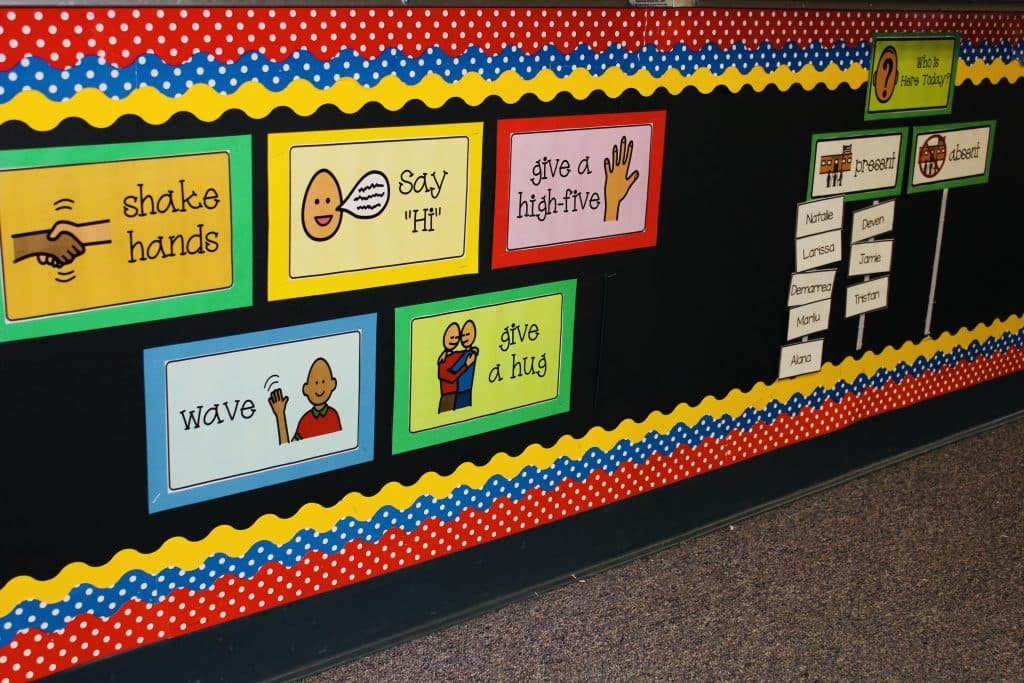
Morning Work Center Rotations
I absolutely love my work centers. I truly believe the system of work center rotations is important in the special education classroom. My work centers are systematic, full of visual supports and utilizes a token economy. Students are able to be successful, work on core academic skills in small groups and are rewarded for positive behavior. Some teachers prefer to run independent stations in their classroom. If you are wanting to run independent stations, I would swap out my work center rotations for independent stations.
To read bout all the details of work center rotations, click HERE.
Morning Snack
After morning work centers, it is time for morning snack. My school called it breakfast because the cafeteria did provide a morning snacks that we saved for this time. I like to keep snack time structured and functional within the classroom before recess. A lot of my students need assistance eating snacks safely and doing so during recess outside was just not a safe option. I utilize snack time as a time to really focus on communication.
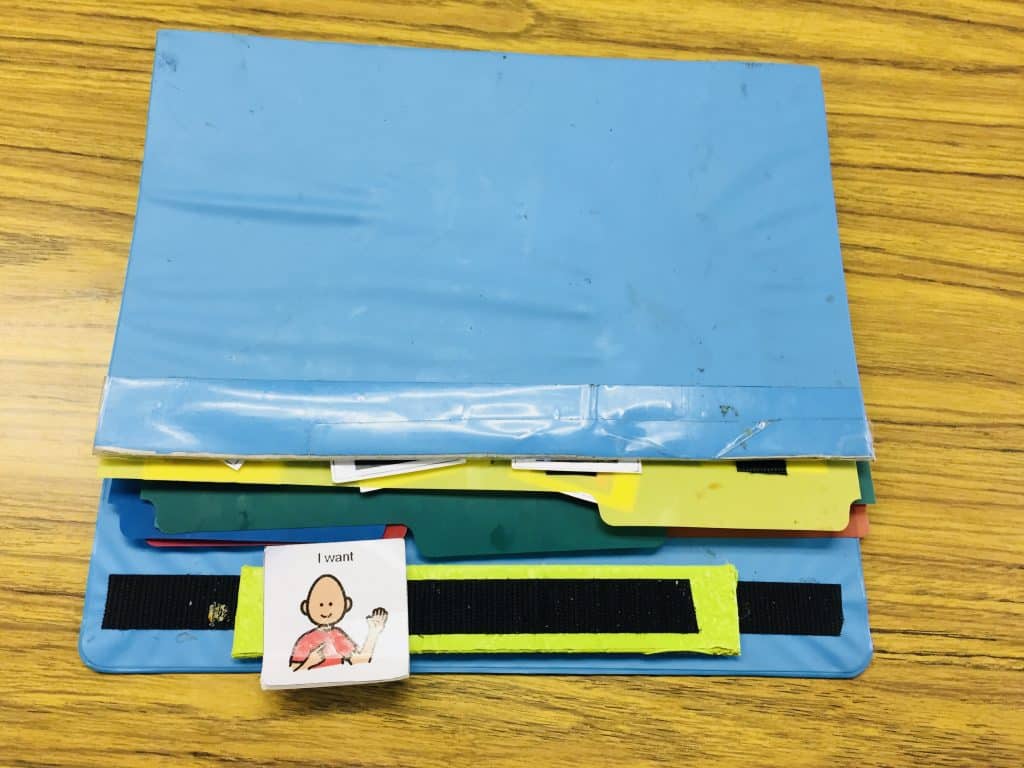
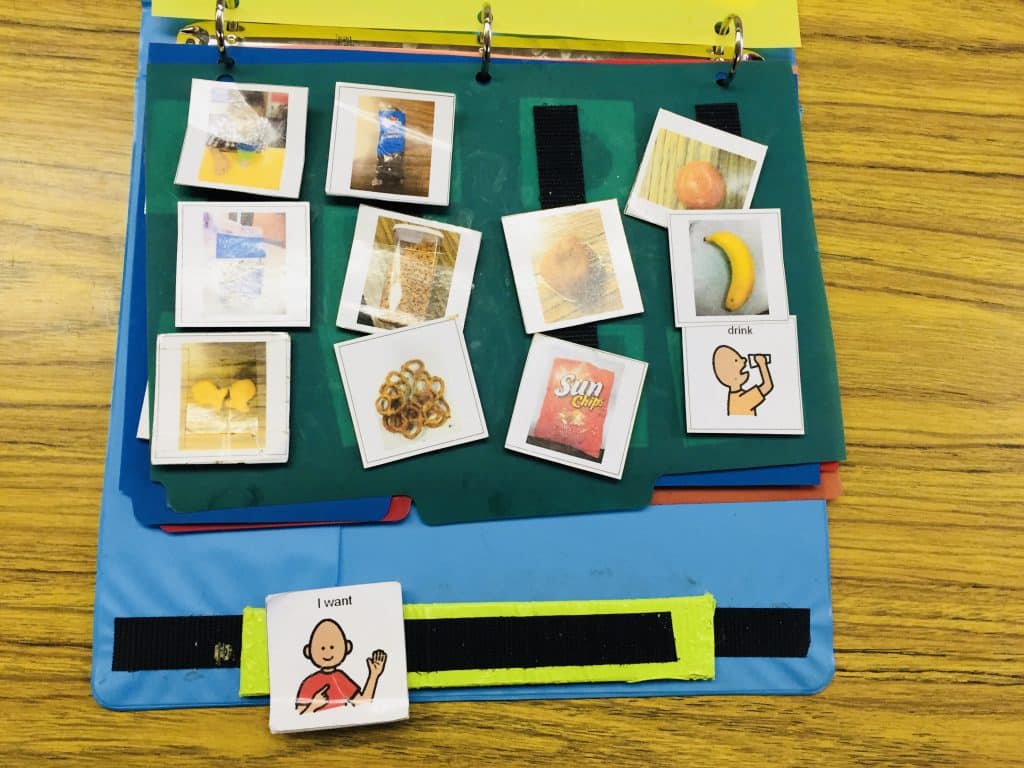

My SLP would push in during snack time on some days to help students with their various communication goals. During snack we have communication devices, switches, picture icons and communication books. Coming together as a whole class to eat snack at the table makes it super simple to transition outside for recess.
Recess
Recess is exactly what you would expect- play time outside. Recess is a very unstructured activity. My students go to recess with the rest of their same age peers at their grade levels time. All of my staff attends recess with my students to help support them. My classroom kept a wagon full of outdoor toys that would help facilitate play with peers as well. Recess was my contracted prep/break time so I did not attend recess with my peers.
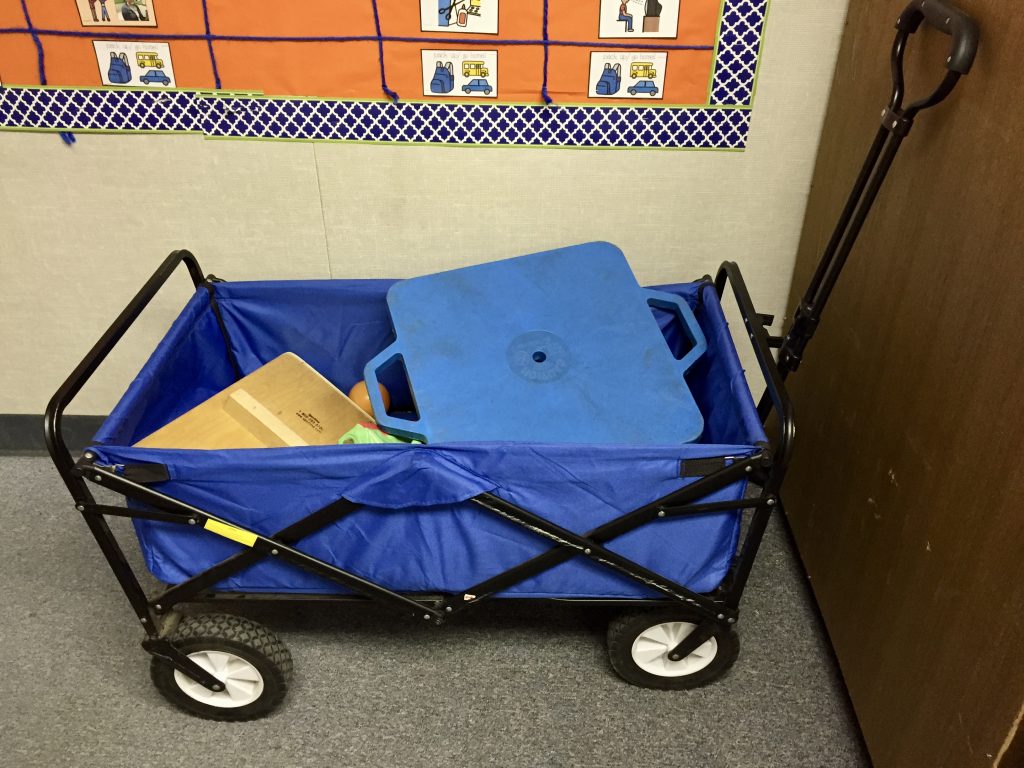
Book Time/Restroom
After recess, my students would come back into the classroom and participate in reading time. One of my student jobs was a “Book Helper.” This student would help pass out books to students. If a student was on task, some days we would allow book buddies which was essentially just a stuffed animal the students could cuddle while reading.
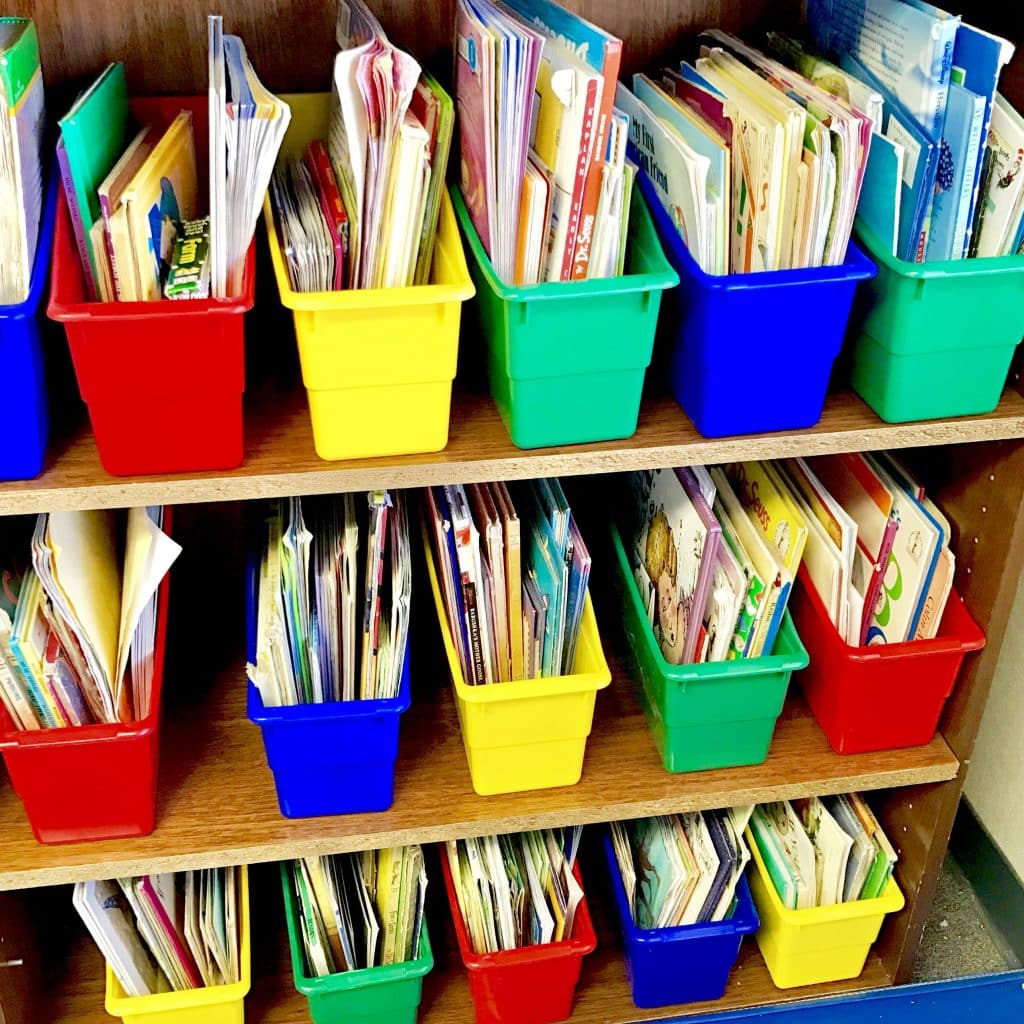

I keep my books in book baskets on my shelf. I have found its much easier for my students to access a bucket at a time to look through books rather than them being directly placed on the shelf.
During book time we do a whole class bathroom break similar to how we do it during morning fitness. My staff takes my students in groups to the restroom. The students that need help toileting get help, and the students that are independent go one at a time. For my students with toileting goals, a lot of toileting visuals are kept in our bathroom. Building independence within the bathroom is a huge goal for all of my students.
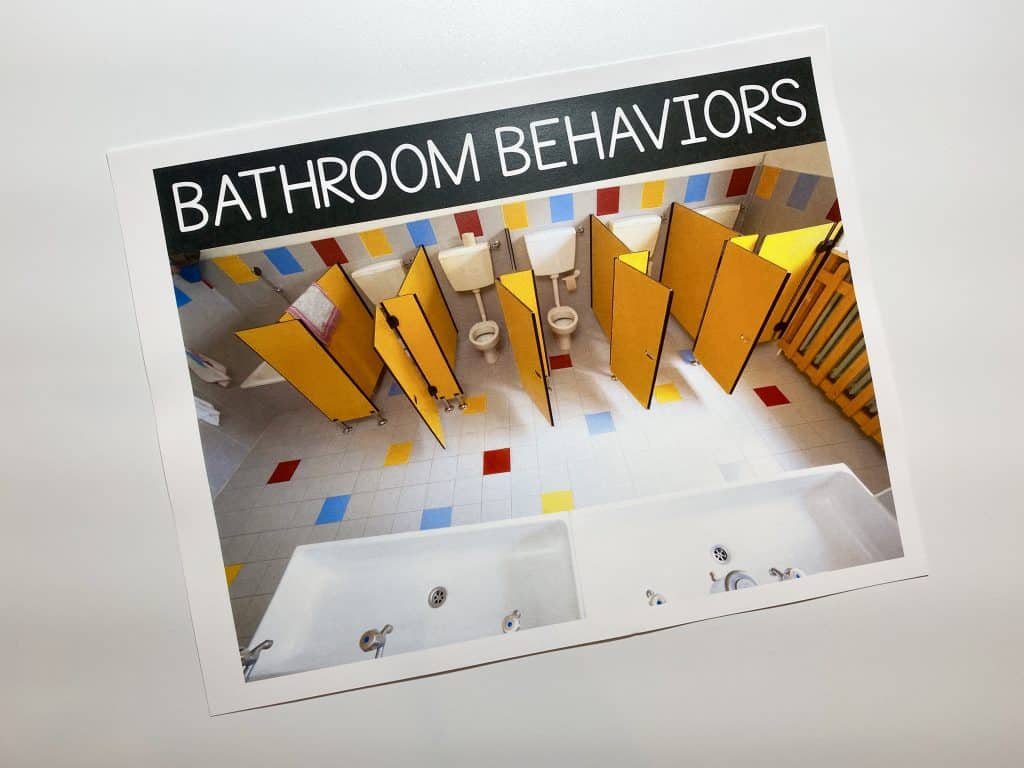
Afternoon Work Centers
In the afternoon, we do work centers just like we did in the morning. It is the same routine, same schedule as in the morning. The only thing that changes is the work that is done at each table. This is where you can implement work binders at a table, work boxes or independent work stations within one center.
To read more about work center rotations, click HERE.
Calendar
After students have finished their free time from afternoon work centers, I do a whole group calendar routine. During calendar time, most of my staff are taking their lunch breaks before my students go out to lunch. This means I have all my students with little to no staff, so whole group it is. Because of this, I keep it hands on and engaging to eliminate boredom and behaviors. Calendar skills are so important for the real world and it is something we practice daily. With that being said, I differentiate the “traditional classroom calendar” so that each kid gets the most out of it.
To get an in-depth tour of my calendar routine, click HERE.
Lunch
Similar to recess, I do not attend lunch with my students. This is my contracted lunch time. All of my staff attend lunch with my students to ensure everyone is safe while eating and playing at lunch recess.
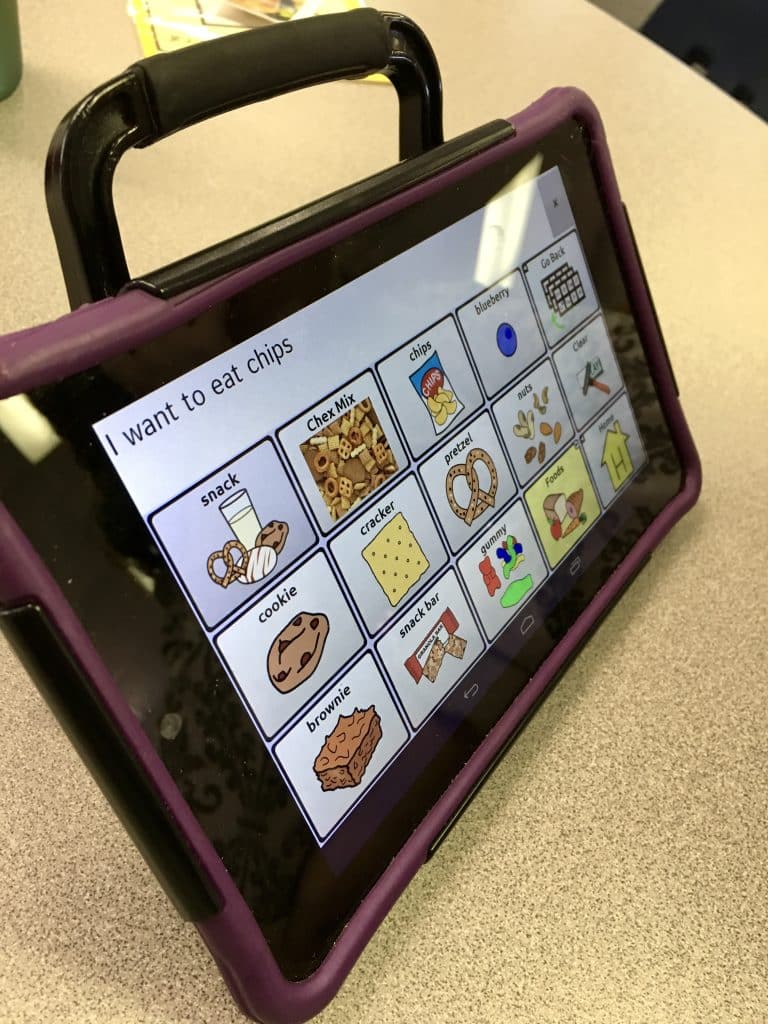
Rest Time
After lunch, my students check their schedules for rest time. Rest time is similar to book time after our morning recess. Rest time acts as a transition activity back from lunch recess before we start our afternoon specials. During rest time, students can get a book or puzzle and rest in a dark room. We have beanbags, swings and cozy blankets. While students are resting, staff members assist students with any toileting needs before we transition to our afternoon specials.
Afternoon Specials
Afterrnoons in my classroom are a little more flexible. Our activities changed depending on the day. This is when I would schedule in specials like library, computer lab and whole group OT. To fill in the gape would do art projects, sensory activities and fun Friday activities.
DAILY SCHEDULE
In conclusion, how you set up your daily schedule is going to vary depending on a lot of variables. I hope sharing my daily schedule is helpful to you to help you decide how to chunk your time!
Like what you read? Don’t forget it, PIN IT!
